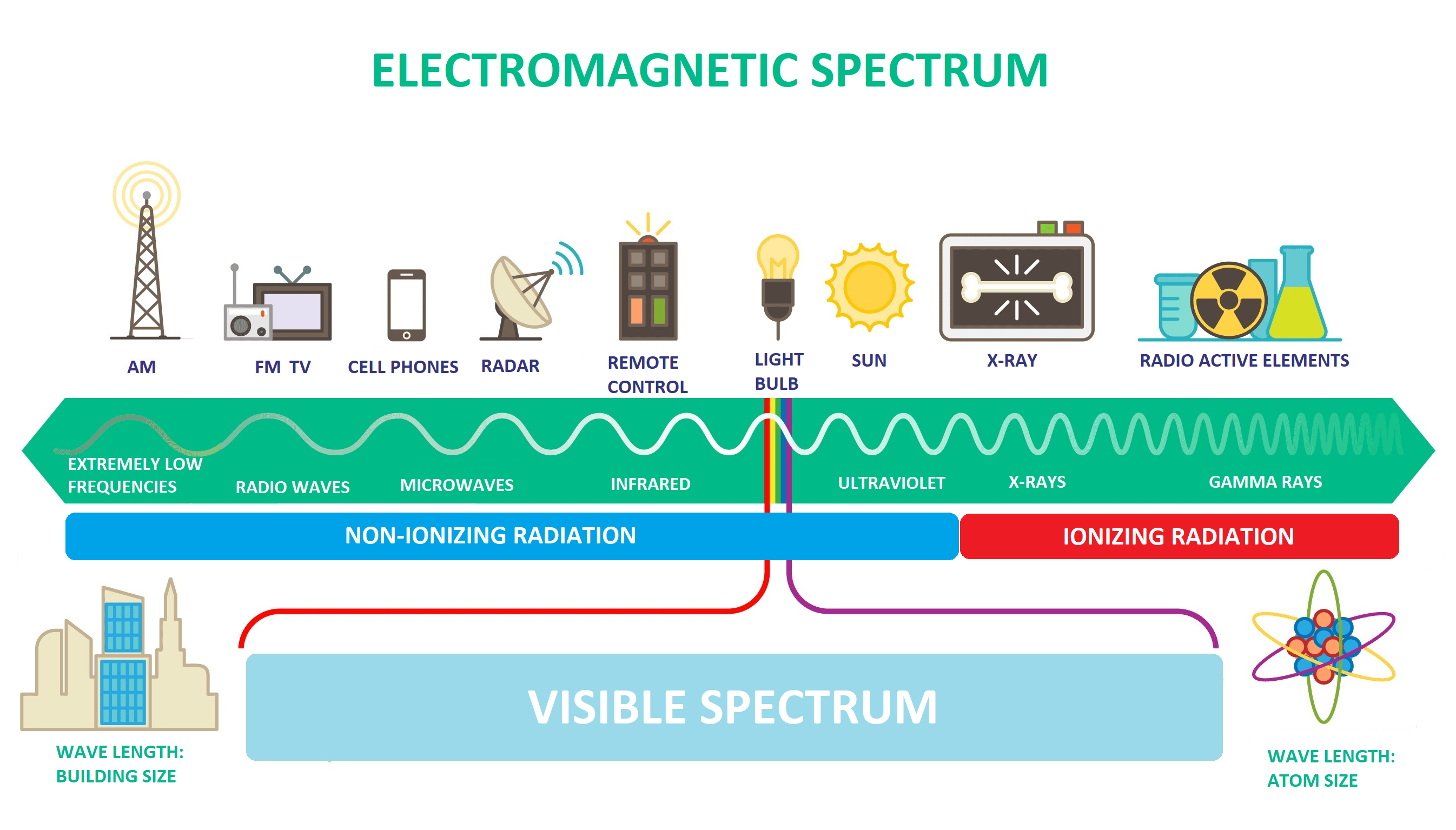Electromagnetic Radiation
Electromagnetic radiation is the set of radiations that transfer energy in the form of electromagnetic waves, ie local and temporal changes of the magnetic and electric field. Most of the electromagnetic fields we are exposed to are man-made (artificial), but some come from nature (naturally). The most widespread and permanent natural electromagnetic field is the magnetic field of the earth itself, which exists everywhere on the planet and in space.Although the earth's magnetic field is all around us, it is very low power, only about 500 milligauss. In general, radiation affects the human body in a complex way, sometimes beneficial and sometimes harmful, depending on the type, intensity and energy it carries.
Electromagnetic fields appear in a wide range of frequencies (electromagnetic spectrum) divided into sub-regions (frequency bands). The frequency range includes ionizing and non-ionizing radiation. The sources of electromagnetic fields, which affect a large part of the population every day (radio waves, microwaves, electricity) and belong to the category of non-ionizing radiation, as shown in the figure below.

IONIZING RADIATION
HOVER FOR INFORMATIONIONIZING RADIATION
Ionizing are the radiations that carry energy capable of penetrating matter, causing ionization of atoms, violently breaking chemical bonds and causing biological damage to the human body. The ionization of a neutral atom is the violent removal of an electron from its layers, due to an external cause, resulting in the production of two oppositely charged ions, the positive atom and the negative electron. The best known ionizing radiations are the X-rays that are widely used in medicine, as well as the α, β, and gamma radiations emitted by the unstable nuclei of atoms.
NON-IONIZING RADIATION
HOVER FOR INFORMATIONNON-IONIZING RADIATION
Non-ionizing electromagnetic radiation is detected in systems emitted at frequencies that carry relatively little energy, unable to interact to ionize atoms, that is, to break down chemical bonds in cell molecules and only cause thermal effects on cells and tissues. These are oscillations of electric and magnetic fields that propagate in space in the form of a wave. The effects of high level (thermal) are due to a measurable increase in the temperature of the tissues that receive radiation, ie energy deposition higher than the thermoregulatory capacity of the human body. Damage to the body is caused by the heating of the irradiated tissues. Low level effects (non-thermal), are caused by low power densities (of the order of a few μW / cm²), so that no increase in tissue temperature is observed.
RADIATION MEASUREMENTS
HOVER FOR INFORMATIONRADIATION MEASUREMENTS
Electromagnetic radiation measurements are usually performed in areas where there is a locally maximum value of the intensity of the incident E / M radiation. The points selected for the measurements, but also for the placement of the measuring stations, are close to base stations, away from reflective surfaces, oriented in the directions of maximum radiation of the antennas and taking into account the population concentration. The protection of the vulnerable groups of the population, as well as the observance of the limits of safe exposure of the public, is achieved by the continuous monitoring of the E / M radiation measurements in areas of the Greek territory.
HEALTH
HOVER FOR INFORMATIONHEALTH
The biological effects of non-ionizing radiation are substantially different from those of ionizing radiation and depend mainly on their intensity and frequency. Low-frequency electric and magnetic fields affect the human body, inducing fields and currents inside it, while radio waves and microwaves affect the human body by heating cells and tissues. For electromagnetic fields, "basic restrictions" and "reference levels" have been established, the observance of which protects health from proven harmful effects. The "basic constraints" have arisen in view of the different environmental conditions and the fact that the state of health and age of members of the general population varies, ie large safety factors have been adopted. The main limitations are limitations regarding exposure to time-varying electromagnetic fields, which come from phenomena with established health effects and taking into account biological studies. The "reference levels", which are the directly measurable quantities in the emitting device environment, come from the basic constraints and provide the maximum degree of protection, as the most unfavorable coupling conditions of the field radiation with the exposed person have been taken into account.
